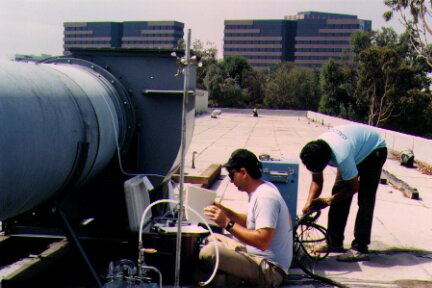Industrial Hygiene

An important component in an audit is industrial hygiene. Aerocomp uses NIOSH and OSHA methods to determine risks to workers. Risks might include exposure to gasses, particulate matter, radiation, temperature, and noise. In the screening, gasses such as sulfur dioxide, carbon monoxide or nitrogen dioxide are monitored with dosimeter tubes, sorbent tubes, or midget impingers. All of these devices may be fitted directly to the exposed worker during his regular work schedule. Small pumps for personal breathing zone monitoring are fitted on the belt with minimal obstruction of job duties. This ensures a sample representative of normal work conditions. If required, special cyclone assemblies are used with the filter to screen for particulates of a certain size. Personal sampling pumps are also used to collect particulates on a filter which is then weighed or chemically analyzed to determine exposure to dusts, fumes, fibers, and other airborne chemical hazards in particulate form. Radiation may be detected and monitored with dosimeter badges or tubes that can be read directly after exposure or are sent to our laboratory for analysis.
A survey meter may also be used to screen several work areas for radiation exposure. Temperature is monitored in trouble spots using wet bulb, dry bulb and globe thermometers, and noise measurements are taken with soundmeters over the course of the work day.
Using the abovementioned tools, the work conditions are reviewed and modified if need be. OSHA, NIOSH, and ACGIH accepted exposure levels are used to isolate problem areas in a facility and appropriate controls are suggested. Protective gear may be used to reduce exposure. This may include half or full face masks, supplied air, or hearing protection. Processes may also be modified to reduce exposure and control equipment such as selective venting at problem areas to reduce exposure. Finally, future testing is performed to monitor improvements in accordance with local regulations, or self auditing.




